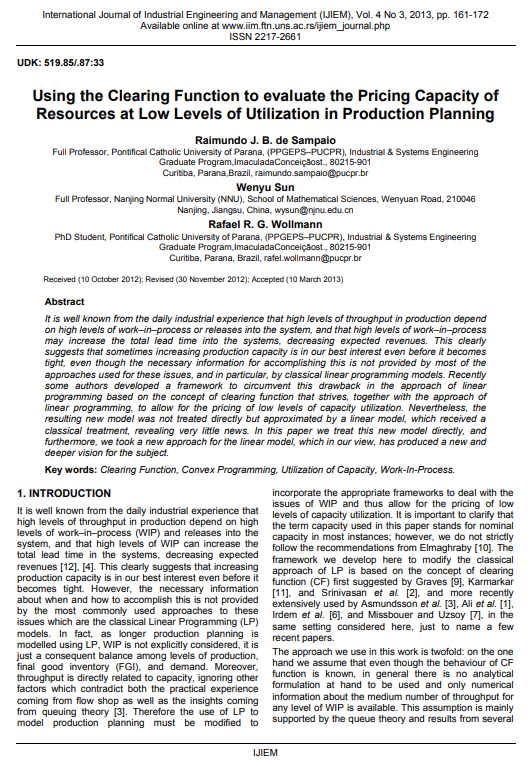Using the Clearing Function to Evaluate the Pricing Capacity of Resources at Low Levels of Utilization in Production Planning

Published 2013-09-30
abstract views: 217 // FULL TEXT ARTICLE (PDF): 0
Keywords
- Clearing Function,
- Convex Programming,
- Utilization of Capacity,
- Work-In-Process
How to Cite
Copyright (c) 2023 International Journal of Industrial Engineering and Management

This work is licensed under a Creative Commons Attribution 4.0 International License.
Abstract
It is well known from the daily industrial experience that high levels of throughput in production depend on high levels of work–in–process or releases into the system, and that high levels of work–in–process may increase the total lead time into the systems, decreasing expected revenues. This clearly suggests that sometimes increasing production capacity is in our best interest even before it becomes tight, even though the necessary information for accomplishing this is not provided by most of the approaches used for these issues, and in particular, by classical linear programming models. Recently some authors developed a framework to circumvent this drawback in the approach of linear programming based on the concept of clearing function that strives, together with the approach of linear programming, to allow for the pricing of low levels of capacity utilization. Nevertheless, the resulting new model was not treated directly but approximated by a linear model, which received a classical treatment, revealing very little news. In this paper we treat this new model directly, and furthermore, we took a new approach for the linear model, which in our view, has produced a new and deeper vision for the subject.
Article history: Received (10 October 2012); Revised (30 November 2012); Accepted (10 March 2013)

